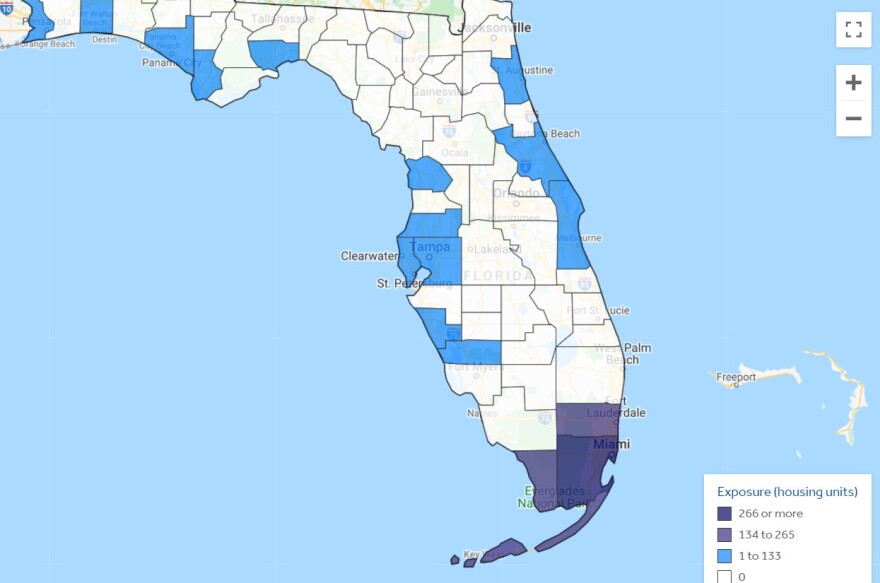New research by the organization Climate Central shows that by mid-century, affordable homes in Florida will see eight times the amount of flooding compared to 2000, meaning some of the most vulnerable people across the state will be affected by sea level rise.
Click here to view an interactive map of flooding projections for 2050.
Scientists with Climate Central say that in 2000, there were about 110 affordable homes in Florida that were expected to flood every year, but the study concludes that figure will go up to nearly 1,000 by 2050.
"What surprised us the most is just that change between 2000 and 2050,” said scientist Scott Kulp. “Most of our exposure analyses and most of this research, you often don't see that kind of change just through mid-century."
People living in affordable housing often have lower incomes, especially for their local areas, he said.
"These people living in affordable housing are already the most vulnerable among us, and the buildings that they're living in they tend to be more vulnerable themselves- they might not be probably as maintained as they should be,” said Kulp. “And so, every time they're hit by coastal flood, that's going to be even more damaging than it would be for many others."
Miami-Dade County tops the state with nearly 400 low-income homes expected to flood annually by mid-century. Monroe County came in second-worst with 216, and Broward is third with 200.
Kulp said there is a chance to change these projections, if we sharply reduce our carbon emissions right now.
"Unfortunately, projections through the next 30 years are essentially locked in by this time, just due to all the emissions that have been put in the atmosphere over the last 100 years or so," he said.
The fossil fuels we've been burning put heat trapping gases, like carbon dioxide and methane, into the atmosphere. They capture heat from the sun, warming the planet, including our oceans.
"When things heat up, they expand and so the oceans are literally expanding right now due to that extra heat," said Kulp. "On top of that, so the extra heat are also melting the ice caps, and that's adding more. There's so much ice sitting on Antarctica and Greenland, sitting on a slant, and if that falls into the ocean, that's adding huge amounts of water to the ocean, also rising sea levels."
The number of affordable homes is already limited, he said, so it would be hard for people to move and that means it’s up to local governments to implement infrastructure and protective measures.
Kulp hopes this research highlights the need to defend our country’s at-risk populations along the coast.





